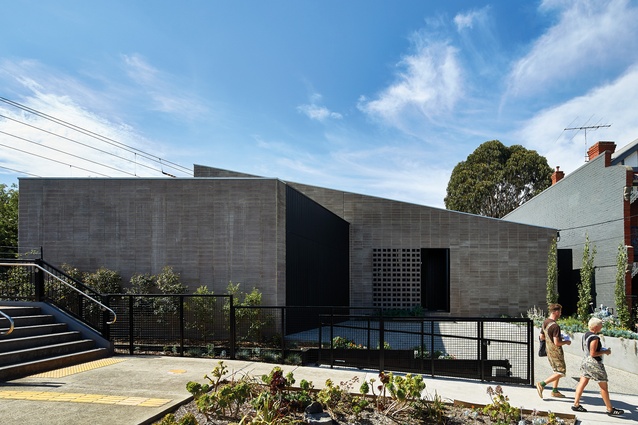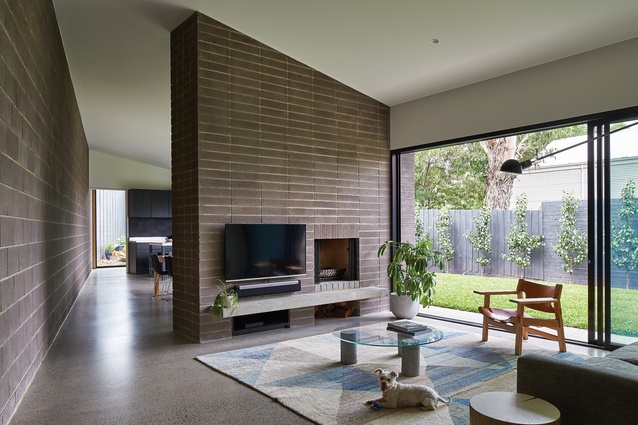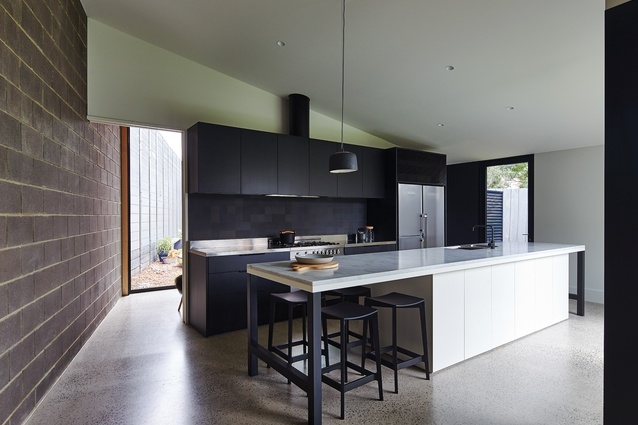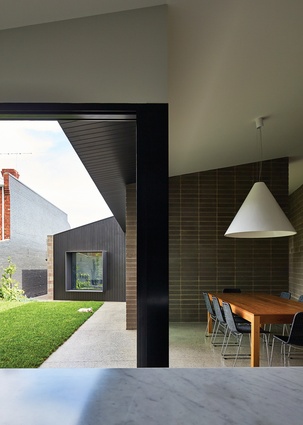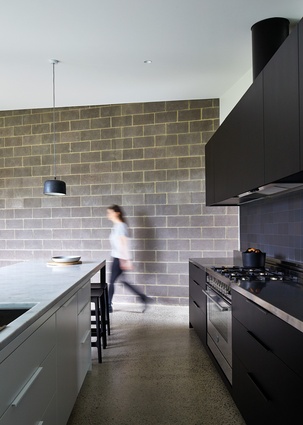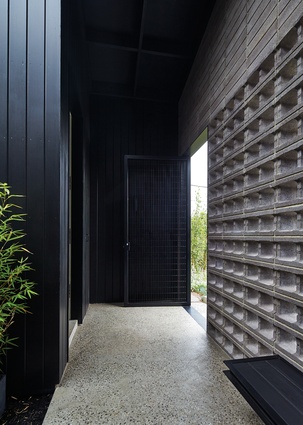Train of thought: Rail House
Set alongside a train line, this new house by Clare Cousins Architects makes the most of its challenging setting to create a private and secure place of retreat for its owners.
The site for Rail House by Clare Cousins Architects, a fifty-metre-long, north–south block, might have appeared at first to be a relatively blank canvas. The 586-square-metre wedge of land had no existing structures to demolish and neighbours on only two of a possible three sides. But a metropolitan train line along the entire length of the western boundary meant the treatment of this elevation would be fundamental to the functionality of the house and would influence the arrangement of spaces before it.
The site, previously occupied by a period home, had some years earlier been purchased by VicTrack as part of a track-widening project. Once the track widening was complete, the site (now a slightly narrower wedge) was put on the market. It was purchased by Danielle and Simon, a couple with two children who wanted to upsize from their weatherboard home of seventeen years.
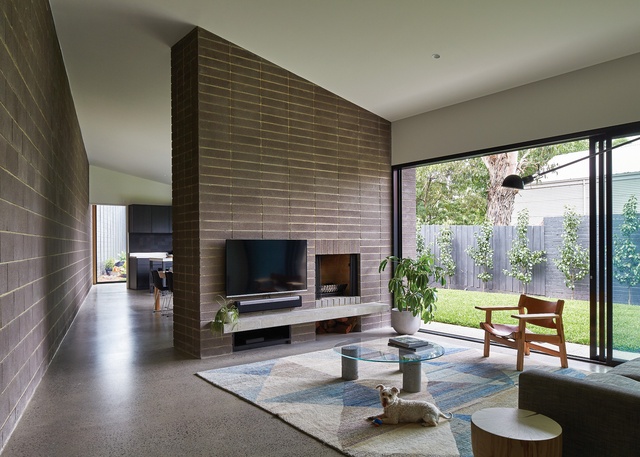
Although the period home had been demolished, a heritage overlay still existed on the site, meaning any new build needed approval from authorities to ensure its integration with the surrounding houses. Before Rail House, several attempts had been made to site apartment buildings and townhouses on the block, but the site’s size and shape couldn’t cater to the requirements of anything but a single dwelling.
To help determine how they might create a comfortable family home so close to a busy train line, the architects sought to gain an understanding of the acoustic sensitivities on the site. With input from an acoustic engineer, they designed a core-filled blockwork sound wall along the length of the site that borders the train line, to absorb the sound as much as possible. The wall was designed as the building’s highest point, with the house tapering downward across its width at the street elevation, allowing sound to pass over the home.
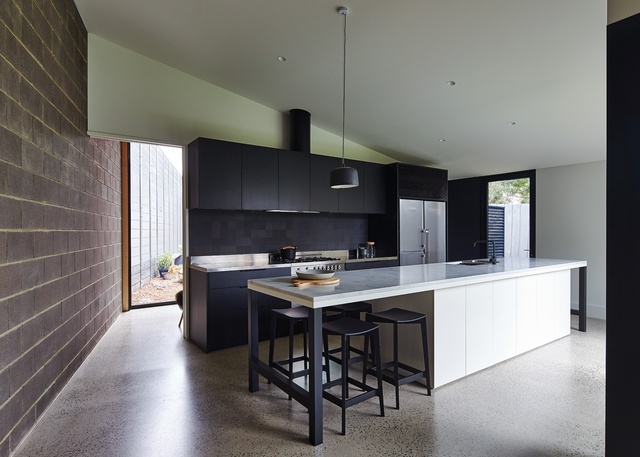
While the western facade is a response to this site constraint, the rest of the house emerges as angled volumes that capture the garage and secure entry portico at the street, with bedrooms, living and kitchen spaces located privately behind. Security was important to the clients and so the street facade gives little away. Narrow bricks were used sparingly on this facade only, adding expression to the striking form. The front door is located within the portico behind a black steel gate, near a light well and small garden that filter natural light into the bedrooms and study that face into them. In the evening, light floods out through the steel mesh of the gate and hollows in the concrete blocks, adding visual interest to the street.
The northern end of the site is the narrowest, which made access to sunlight challenging. The kitchen and dining room are located at this end of the house; the family enjoys entertaining, so these spaces were designed to be generous in size and open out to a central yard. The kitchen, dining and living spaces all look out onto the yard as they hug its perimeter, making a croissant-like shape. Behind the kitchen on the northern facade is a small nook where Dani spends time reading and relaxing in the midday sun that streams through a full-height window.
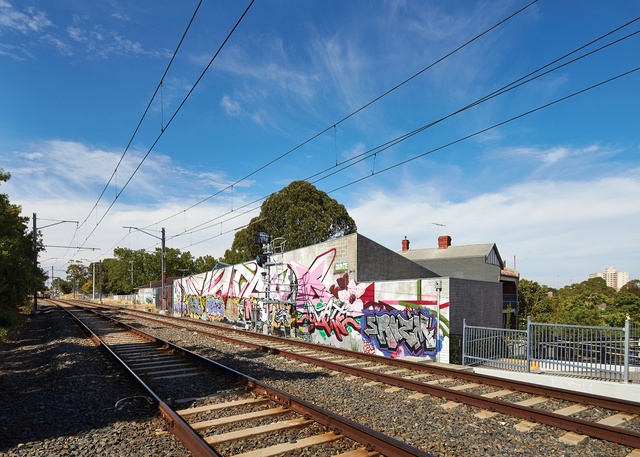
Small yet joyful spaces like these appear throughout the dwelling. Simon’s study faces into the light well and courtyard at the front of the home, while a sliding door in the adjacent corridor opens up to a craft nook. Clare says it is opportunities and design elements like these that add to the quality of the space as a whole.
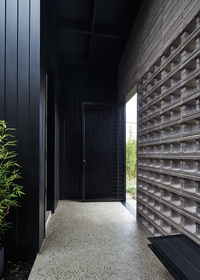
In an exercise of aesthetics-meets-affordability, the forty-metre length of the core-filled block wall is expressed internally as a corridor wall, the air between rooms doubling as another acoustic buffer. Externally, this same wall acts somewhat as a billboard. The local council worked with the clients to commission a graffiti artist, who created a vibrant mural that has since been layered with more graffiti. The palette throughout the rest of the house is purposefully restrained, allowing the clients to layer spaces with artwork and furniture in the future.
Often a site comes with constraints that prescribe elements of a design, the response requiring an ingenious and thoughtful approach to ensure the building functions well as a home and responds to the clients’ brief and needs. With Rail House, the architect has taken a challenging setting and used this to the project’s advantage.

